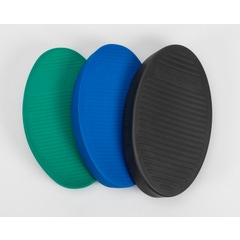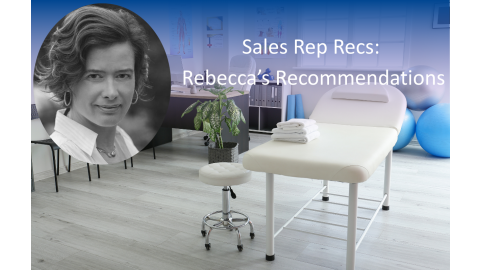Top Products in this Article
Fall Prevention at Home and in Hospitals
Are you a senior worried about falls threatening your independence?
A caregiver worrying about your elderly parents or grandparents falling?
Or a nurse, doctor, or therapist worried about your patients falling in your hospital or at home?
You should be concerned and proactive. 1 in 4 people over the age of 65 fall each year in the U.S.1 That’s over 29 million falls a year!2 But there are steps you can take to reduce your risk (or your loved one’s/patient’s risk) of falling.
Start by learning more about fall statistics. Did you know one in five falls results in a serious injury, like a head injury or a fracture?1 Falls can be a serious, life-altering injury, which is why prevention is so important.
Keep reading to learn more about fall prevention and how you can stay safe.
Fall Prevention for Seniors & Caregivers at Home & in Independent Living or Assisted Living Facilities
or
Fall Prevention for Doctors, Nurses, Therapists, & Hospital Administrators in Hospitals & Clinics
Fall Prevention for Seniors & Caregivers at Home & in Independent Living or Assisted Living Facilities
Are you at risk for falls?
Basic Fall Prevention Tips for Seniors and Caregivers
A Fall Prevention Checklist for Your Home
Fall Prevention Products for Your Home
Balance and Strengthening
What to Do If You Fall
Fall Prevention Recap
Are you at risk for falls?
Age is one risk factor for falls. As you get older your risk of falling increases. But other factors can also affect your fall risk.
For example, some medications have side effects, like dizziness or lightheadedness that can make falls more likely. You can talk to your doctor or pharmacist about any possible changes (different dosages, alternative medication, etc.) that can help reduce your fall risk.
Take this simple fall risk quiz to find out if you have an increased chance of falling.
Basic Fall Prevention Tips for Seniors and Caregivers
There are simple steps you can take to reduce your risk of falls. One way to stay safe is to install grab bars near stairs, in your bathroom, and anywhere else you need an extra place to grip for support.
Another simple way to reduce your fall risk is adding additional lighting at the top and bottom of your stairs and nightlights from your bedroom to your bathroom. Find more ideas in this article full of basic fall prevention tips.
If you’re a caregiver, there are additional steps you can take to protect your loved one. For example, adding a shower chair in the bathroom gives your parent or grandparent a place to sit while bathing, reducing their risk of slipping. Check out these three tips to make your home safer for your loved one.
A Fall Prevention Checklist for Your Home
Once you’ve gone over the basics of fall prevention, make sure your whole home is safe using a checklist. This fall prevention checklist covers it all from keeping a flashlight in your bedroom to coiling extension cords in your living room. Don’t miss a thing with this list of fall prevention suggestions for your stairs, bedroom, bathroom, kitchen, living room/family room, and outdoor areas!
Fall Prevention Products for Your Home
With so many options to choose from, it can be hard to decide what products are best for your home. Check out this list of 30 fall prevention products organized by category. It includes information on all of the products you might want to add to your home to reduce your risk of falls.
For example, a raised toilet seat makes standing easier and reduces your chances of falling while using the toilet. The list also includes exercise products, like THERABAND Stability Trainers, that can be used to help improve your balance. You’re sure to discover fall prevention products that work for you.
If you’re looking for the best products to get you started on “fall-proofing” your house, check out this list of our top 5 fall prevention products (grab bars are #1). These helpful products will also help reduce your risk of falls at home.
Balance and Strengthening Exercises to Prevent Falls
Taking an exercise class can also help reduce your risk of falls. Really! Research studies have proven that strength and balance exercises reduce fall rates.3,4
With just a couple of products, like a stability trainer, a CLX resistance band, and ankle weights, you’ll be ready to start exercising at home.
Get started with these five simple exercises to reduce falls. Then check out these other balance and stability products and exercises to continue your fitness regimen.
What to Do If You Fall
Accidents happen. Even if you take every precaution, you may still fall. Then what do you do?
From how to get up after a fall, to when you should see a doctor, to how to relieve your painful bumps and bruises, we cover it all.
If you’re prepared, you’ll know the next steps to take after an unfortunate fall.
Fall Prevention Recap
Everyone gets older, but aging doesn’t need to lead to falls. With balance and strengthening exercises and fall prevention products you can reduce your risk of falls and make your home safer.
Check out our full assortment of fall prevention products for more items to keep you safe and independent!
Fall Prevention for Doctors, Nurses, Therapists, & Hospital Administrators in Hospitals & Clinics
Fall Prevention Research
What to Include in a Fall Risk Assessment
Fall Prevention for Hospital Administrators and Nurses
Fall Prevention Products for Hospitals and Clinics
How to Prevent Falls After Your Patient Returns Home
Fall Prevention Research
When taking steps to protect your patients from falls, rely on the research. Many studies have been done to determine what interventions are effective at preventing falls. For example, one meta-analysis found that exercise reduces both the risk and rate of falls.5
Read these fall prevention research summaries on home modifications, exercise, clinical interventions, and multifaceted interventions to find out what interventions are proven to reduce fall rates. The complete studies are linked in case you want to know more.
Apply what you learn to your patients’ individualized fall prevention plans to keep them safe while in the hospital and at home.
What to Include in a Fall Risk Assessment
One important step in reducing falls is properly identifying patients that are at a higher risk of falling. Fall risk screenings and assessments do just that. There are various screening tools available, but most of them consider these factors that increase your patient’s fall risk:
- Previous fall history
- Older age
- Gait instability, including the use of a mobility aid
- Urinary incontinence, frequency, or need for assistance
- Medication (due to side effects like dizziness or unsteadiness)
- Patient care equipment (IVs, chest tubes, etc.) that tether patients in place
- Altered mental status
You can learn more about the types of falls, suggestions for universal and patient-specific fall precautions, and more in this article on fall prevention assessments. Plus, the article includes a free downloadable poster to communicate patient-specific fall risks and interventions to patients, patients’ families, and hospital staff.
Fall Prevention for Hospital Administrators and Nurses
Hospital Administrators
Everyone wants to keep patients safe when they are under your hospital’s care, but 700,000 to 1 million hospitalized patients fall every year.6 Fall prevention programs can reduce your patients’ risk of falls.
Clear policies and responsibilities for all members of the unit including nurses, nursing aides, physicians, pharmacists, occupational and physical therapists, and other staff ensures everyone does their part to reduce falls.
Learn more in this article on fall prevention strategies for hospitals that includes suggested responsibilities for each staff role, research on fall prevention programs, ways to reduce falls, and information on how patient falls can affect your hospital’s DRG (diagnosis-related grouping) payments.
Nurses
Fall prevention is an interdisciplinary responsibility, but the higher number of patient contact hours means a lot of the responsibility falls on nurses during direct care.
Taking universal fall precautions, like making sure all of your patients wear non-slip footwear and know how to use the call button, can reduce your patients’ fall risks.
You can learn more about universal precautions and check out a fall prevention intervention checklist in this article on nurses and fall prevention. From fall rates per unit to ways to reduce patient injuries, all of the basics are covered so you know how to keep your patients safe.
Fall Prevention Products for Hospitals and Clinics
From gait belts to fall mats, there are several products designed to reduce the risk of patient falls and injuries. Even simple, inexpensive products like non-slip double tread slipper socks can help prevent falls in your hospital.
Find out what’s on our list of the top 17 fall prevention products for hospitals. Our list includes items for patient rooms and bathrooms, and even includes physical therapy equipment to improve your patient’s strength and balance before they head home.
And don’t forget to check out our full selection of fall prevention products to keep your patients safe as they recover in the hospital, complete rehab in an outpatient clinic, or work to remain independent at home.
How to Prevent Falls After Your Patient Returns Home
Preventing falls in the hospital is challenging, even with all of the staff working to keep patients safe. Preventing falls once your patient returns home can be even more of a challenge.
Taking the time to talk to your patients about their fall risk and steps they can take to stay safe at home can help. Using fall prevention handouts can be a helpful addition to these talks and can also serve as a visual reminder of precautions to implement once your patient goes home.
Whether you would prefer to print out brochures to keep in your office or download a PDF to email to your patients, you can get your fall prevention handouts here.
With falls ranking as the #1 cause of injury and injury death in people over the age of sixty-five, fall prevention should be a priority for everyone, including doctors, nurses, therapists, caregivers, and seniors themselves.8 Fall prevention helps ensure seniors’ independence, mobility, and safety now and in the future.
Now that you know more about fall prevention, explore our other articles to learn more and take steps to reduce falls by looking at our full line of fall prevention products.
If you’re a senior who has additional questions about fall prevention, talk to your doctor to discuss your concerns and discover more precautions you can take to stay safe and on your feet.
References
- Centers for Disease Control and Prevention. (n.d.). Important Facts About Falls. Retrieved from https://bit.ly/2mjZik6
- Centers for Disease Control and Prevention. (2016). Falls Are the Leading Cause of Injury and Death in Older Americans. Retrieved from https://bit.ly/2cs0VZ5
- Rubenstein, Laurence & R Josephson, K & R Trueblood, P & Loy, Steven & O Harker, J & M Pietruszka, F & S Robbins, A. (2000). Effects of a Group Exercise Program on Strength, Mobility, and Falls Among Fall-Prone Elderly Men. The Journals of Gerontology. Retrieved from https://bit.ly/30Gv2Rv
- Skelton, D., Dinan, S., Campbell, M., & Rutherford, O. (2005). Tailored group exercise (Falls Management Exercise — FaME) reduces falls in community-dwelling older frequent fallers (an RCT). Age and Ageing. Retrieved from https://bit.ly/2PlFb51
- Gillespie L.D., Robertson M.C., Gillespie W.J., Lamb S.E., Gates S., Cumming R.G., & Rowe B.H. (2009). Interventions for preventing falls in older people living in the community. Cochrane Database of Systematic Reviews. Retrieved from https://bit.ly/2ZwAMjK
- Dykes, P.C., Adelman, J., Adkison, L., et al. (2018). Preventing Falls in Hospitalized Patients. Retrieved from https://bit.ly/2Ngsffb
- Agency for Healthcare Research and Quality. (2019). Falls. U.S. Department of Healthcare Research and Quality. Retrieved from https://bit.ly/2KuOCKY
- National Council on Aging. (n.d.). Fall Prevention Facts. Retrieved from https://bit.ly/1mxuQjq
Medical Disclaimer: The information provided on this site, including text, graphics, images and other material, are for informational purposes only and are not intended to substitute for professional medical advice, diagnosis or treatment. Always seek the advice of your physician or other healthcare professional with any questions or concerns you may have regarding your condition.








 France
France Australia
Australia












